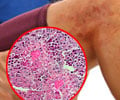
Shankardass said 70 percent of the children involved in the study had moved from their birth neighborhood, further suggesting the air pollution during pregnancy and shortly after birth was related to developing asthma later in childhood.
While exposure to traffic-related air pollution helped explain some of these clusters, Shankardass said air pollution isn't necessarily acting alone in causing childhood asthma, or else they would have found similar clusters along all the main thoroughfares in Toronto.
His study was published online today in the journal Health & Place.
Shankardass said other risk factors that could be associated with childhood asthma include the relatively low socioeconomic status in Parkdale-Little Portugal and Scarborough, which have average median incomes of $51,767 and $52,944, respectively, compared to $65,047 in the rest of the greater Toronto area.
In addition, there may be persistent air pollution in Scarborough from sources other than traffic, such as factories. In 2006, the average area of industrial land-use in Scarborough (62,715 square metres) was far higher than the rest of the GTA.
Advertisement
Shankardass is also an assistant professor in health sciences at Wilfrid Laurier University.
Advertisement
Source-Eurekalert














